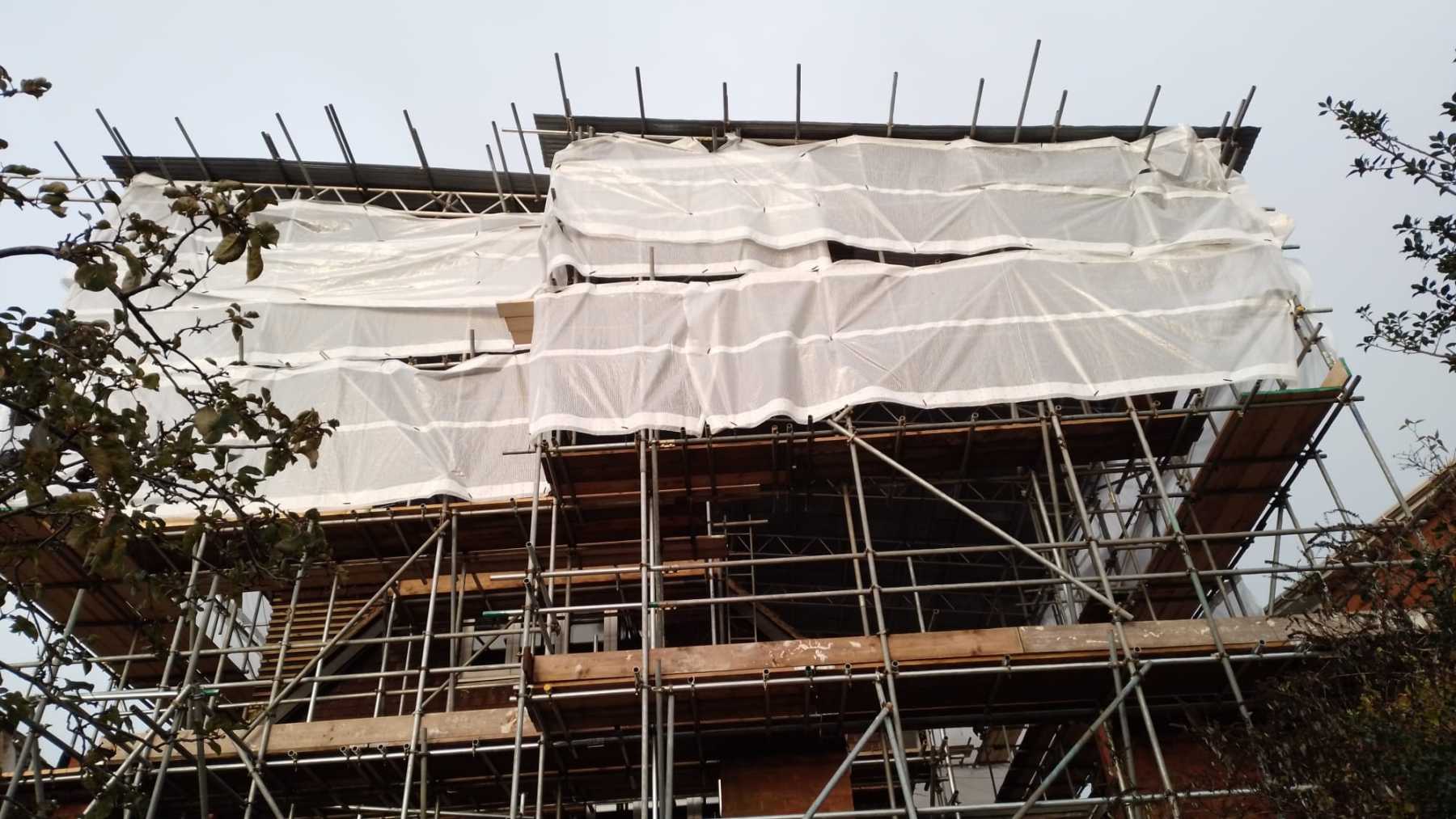
The History of Scaffolding: From Ancient Civilizations to Modern-Day Engineering Marvels
Scaffolding, as we know it today, plays a crucial role in the construction and maintenance of buildings, bridges, and other structures. It allows workers to reach high places safely, supporting both human labour and materials. But did you know that scaffolding has a long and fascinating history? From the ancient wonders of the world to modern skyscrapers, scaffolding has evolved over thousands of years.
In this blog, we’ll take a look at the history of scaffolding, tracing its development from early civilizations to the advanced systems used in construction today.
The Origins of Scaffolding: Ancient Civilizations
Scaffolding can be traced back to the earliest days of human construction. As soon as people began to build structures taller than their own reach, they needed a way to elevate workers and materials safely.
Ancient Egypt
The first known use of scaffolding dates back to ancient Egypt, around 4,500 years ago, during the construction of the Great Pyramid of Giza. The Egyptians were skilled builders, and their monumental tombs and temples required the use of temporary structures to support workers and materials. It is believed that the Egyptians used ramps to move stone blocks into place, and these ramps likely served as a form of scaffolding. The scaffolding used in ancient Egypt would have been rudimentary by today’s standards. Workers would have used simple wooden platforms or ladders to reach higher levels, much like the scaffolding systems in use today, but without the modular components or complex safety features we now take for granted.
Ancient Greece and Rome
As architecture evolved, so did the use of scaffolding. In ancient Greece and Rome, the demand for scaffolding grew with the construction of large temples, amphitheaters, and public buildings. The Greeks and Romans used wooden scaffolds made from simple planks and poles, but their innovations in engineering and construction made scaffolding systems more reliable and safer. Roman engineers were particularly skilled at designing scaffolds for large-scale projects like the Colosseum and aqueducts. They used scaffolds to construct the upper levels of amphitheaters, while also incorporating wooden platforms for workers to stand on. In many cases, these early scaffolds were simple ladder-like structures, and the wood used was usually sourced from the nearby forests.
The Romans also developed a system of scaffolding with platforms, which allowed workers to carry out complex tasks such as carving and placing decorative stonework. These platforms were often connected by rope systems, adding an element of stability to the scaffolding structure.
The Middle Ages: Advancements in Building Techniques
During the Middle Ages, scaffolding continued to evolve, particularly in Europe. With the rise of cathedrals and castles, scaffolding became a more integral part of construction.
Gothic Cathedrals
The construction of Gothic cathedrals in the 12th through 16th centuries saw significant advancements in scaffolding techniques. Builders needed to reach great heights to construct the intricate designs of these monumental structures, including the towering spires, ribbed vaults, and flying buttresses.
Gothic builders used stone scaffolding for some of the highest points, alongside wooden scaffolds for the main body of the building. These stone scaffolds were often made by stacking blocks in a way that they formed a stable platform for workers to stand on. This allowed builders to work on high arches and vaulted ceilings.
Another notable advancement during this time was the use of cranes alongside scaffolding. The invention of the crane allowed builders to lift heavier materials, and it became a vital tool in the construction of large structures like churches, castles, and bridges. Cranes were often integrated into scaffolding systems to help move heavy blocks and materials to higher levels.
The Renaissance: The Birth of Modern Scaffolding
The Renaissance period (14th to 17th centuries) was a time of immense architectural innovation, particularly in Italy. Artists and architects like Leonardo da Vinci, Michelangelo, and Andrea Palladio not only advanced the field of architecture but also contributed to the development of scaffolding.
Leonardo da Vinci’s Contributions
Leonardo da Vinci, the famed polymath, sketched detailed designs for scaffolding and lifting machines. One of his designs included a scaffolding system that incorporated both cranes and pulleys, allowing for a more efficient method of raising materials to great heights. These designs would lay the groundwork for many future developments in construction technology.
Michelangelo and the Sistine Chapel
Perhaps one of the most famous examples of scaffolding in Renaissance history is Michelangelo’s work on the Sistine Chapel in Vatican City. When he was commissioned to paint the chapel’s ceiling in 1508, there were no existing systems of scaffolding suitable for such a monumental task. To carry out his work, Michelangelo designed a special scaffolding system that allowed him to work directly beneath the ceiling while being supported by a platform.
Michelangelo’s scaffolding was notable for being anchored to the walls of the chapel, with a series of platforms that extended across the length of the ceiling. This system was one of the first of its kind to allow for the safe and stable positioning of workers at high altitudes.
The Industrial Revolution: Scaffolding Becomes a System
The Industrial Revolution (18th to 19th centuries) marked a major turning point in the history of scaffolding. As buildings grew taller and more complex, the need for safer, more efficient scaffolding systems became urgent. Advances in manufacturing, particularly the mass production of metal, allowed for stronger and more durable scaffolds.
Steel and Iron Scaffolding
By the 19th century, scaffolding began to incorporate metal—specifically steel and iron—replacing the traditional wood that had been used for thousands of years. This made scaffolding both sturdier and more versatile, capable of supporting greater loads and being assembled in various configurations.
Modular scaffolding systems became widely used, with standard components such as frames, planks, and couplers that could be easily assembled and disassembled on-site.
This made scaffolding quicker and cheaper to construct, leading to its widespread adoption in the booming urban centers of the industrialised world.
The Rise of High-Rise Construction
As cities grew taller, so did the need for scaffolding to support the construction of skyscrapers and other large structures. In the early 20th century, the construction of high- rise buildings, such as the Empire State Building in New York City (completed in 1931), required new forms of scaffolding that could safely accommodate large teams of workers at great heights.
The Safety Revolution
With the rise of tall buildings and industrial construction, safety became an increasingly important concern. In the early 20th century, safety standards for scaffolding began to emerge. In the United States, the Occupational Safety and Health Administration (OSHA) was founded in 1970, and it introduced regulations that set the standard for scaffolding safety, including the use of guardrails, safety harnesses, and secure platform structures.
Modern Scaffolding: A High-Tech, Modular Future
Today, scaffolding is a highly sophisticated industry. The introduction of aluminum scaffolding and modular scaffolding systems has made the process of setting up scaffolds quicker, safer, and more efficient. Modern scaffolding systems are designed for maximum safety, with features like advanced locking mechanisms, guardrails, and non- slip platforms.
The future of scaffolding may also include smart scaffolding that incorporates technology such as sensors to monitor structural integrity, ensuring worker safety and reducing the risk of accidents.
Conclusion – A Journey of Innovation
From the ramps of ancient Egypt to the modular systems of today, scaffolding has come a long way in supporting human progress in construction and architecture. It has been a crucial part of building some of the world’s most iconic structures, and its evolution mirrors the growth of human civilization itself. As we look toward the future, scaffolding will continue to play an essential role in shaping the skylines of tomorrow, ensuring that workers can reach new heights with safety and efficiency.
For more information about the more modern services that A-Fix Scaffolding provide, contact us today.

